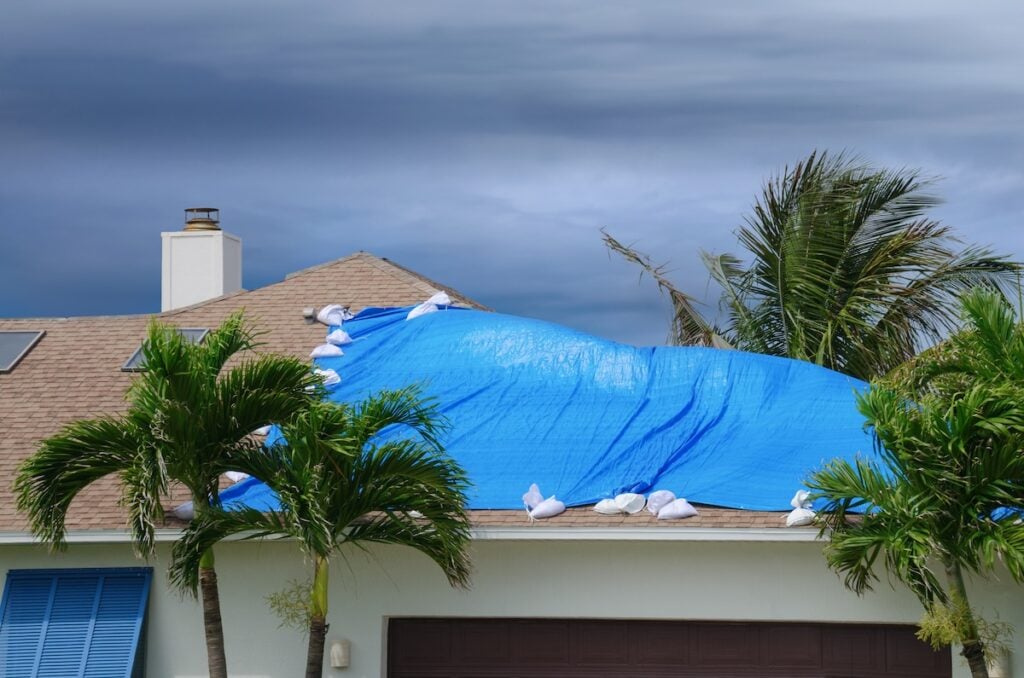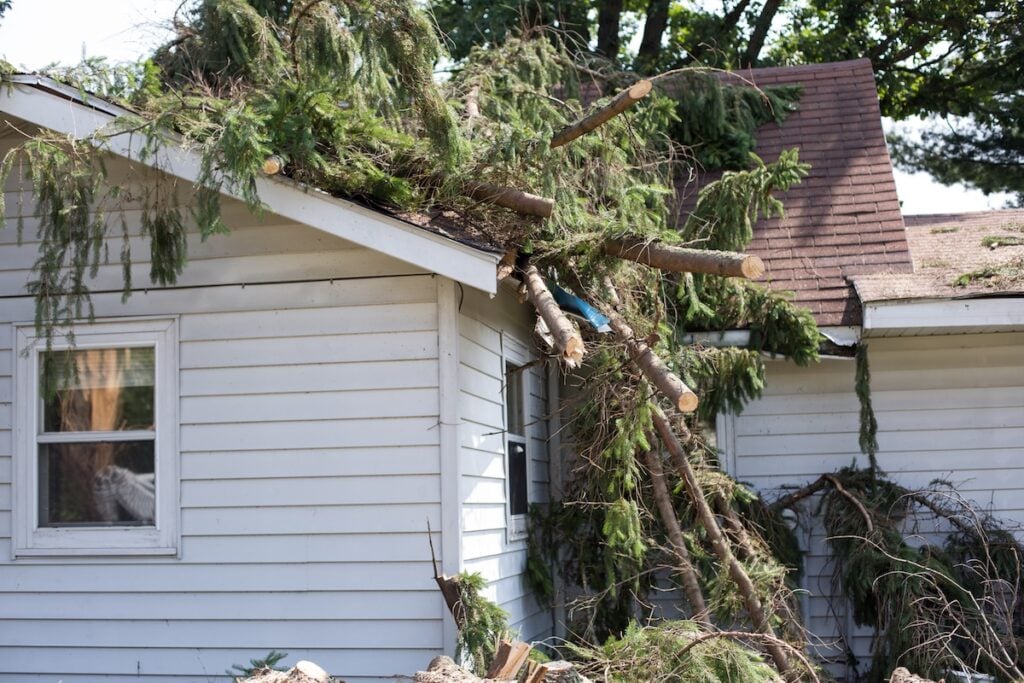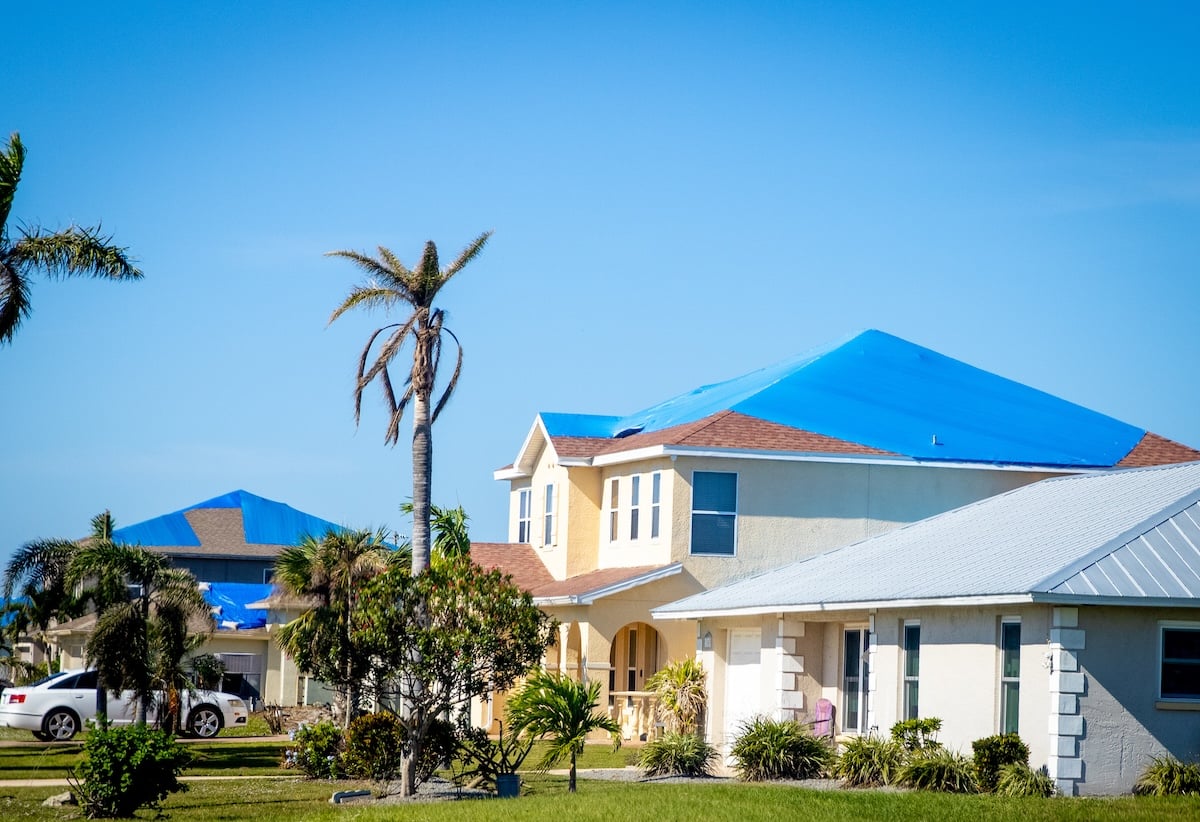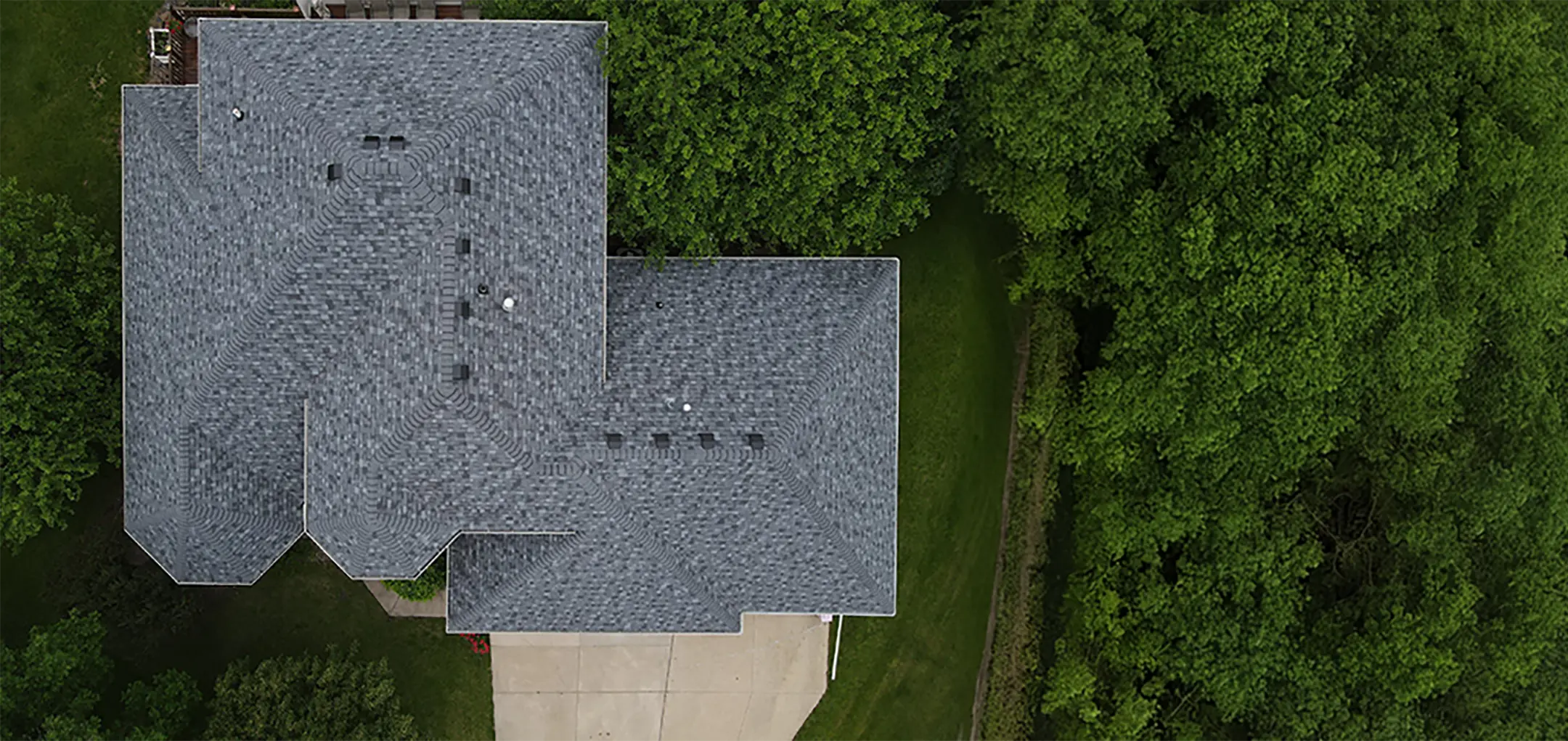Hurricane damage roof repair is one of the most urgent concerns homeowners face after a major storm rolls through. High winds, heavy rain, and flying debris can leave roofs in disrepair, leading to leaks, water damage, and serious safety risks if not addressed quickly.
In this blog, we’ll walk you through:
- What signs of damage to look for right after the storm
- How to navigate insurance claims the smart way
- Why choosing the right roofing contractor matters for long-term protection
Let’s break down what happens after the storm and how to get your roof back in top shape.
⚠️ Immediate Steps to Take After a Hurricane
After a hurricane has passed, your first priority should be safety. Once conditions are safe enough to assess your property, there are a few steps you can take right away to protect your home and begin the hurricane damage roof repair process.
Stay Safe and Document Everything
Avoid climbing on the roof right after the storm. Instead, assess from the ground with binoculars if needed. Take photos or videos of visible damage.
- Safety first: Never attempt roof inspection during or immediately after dangerous weather.
- Visual documentation: Capture pictures of any visible roof damage, fallen trees, or debris for insurance.
- Interior inspection: Look for water stains, sagging ceilings, or leaks inside the attic or top floor.

Prevent Further Water Intrusion
If your roof has active leaks, temporary tarping may be necessary to prevent more extensive water damage.
- Use emergency tarps: Cover leaking sections to stop more water from getting inside.
- Protect valuables: Move furniture and electronics away from affected areas.
- Call professionals: Emergency roofing services can often provide same-day tarping or patching.
🔍 Identifying Hurricane Roof Damage
Hurricane damage can be obvious or subtle. A professional roof inspection ensures nothing gets missed, especially damage that isn’t visible from the ground.
Common Signs of Hurricane Roof Damage
- Missing shingles: Wind can rip asphalt shingles straight off the roof deck.
- Lifted or loose shingles: Even if shingles aren’t missing, they may be unsealed and vulnerable.
- Damaged flashing: Bent or torn metal flashing around chimneys and vents can allow water inside.
- Cracked or broken tiles: For tile roofs, high winds or debris can cause cracks that lead to leaks.
- Granule loss: Check gutters for shingle granules, which indicate wear and tear.
Hidden Structural Issues
Even if your roof looks intact, hidden problems like soaked underlayment or compromised decking can cause long-term damage.
- Water infiltration: Water may have seeped in beneath the shingles or tiles, leading to mold or rot.
- Weakened roof decking: Prolonged exposure to moisture can compromise the integrity of the entire roof system.

📋 How to Handle the Insurance Claim Process
Filing a hurricane-related roof insurance claim can feel overwhelming, but having a clear process makes it more manageable.
Contact Your Insurance Provider Promptly
Once you’ve documented the damage, notify your homeowner’s insurance company as soon as possible.
- File quickly: Insurance companies often receive a high volume of claims after hurricanes. Acting fast improves your chances of a timely payout.
- Claim number: Record your claim number and the name of your assigned adjuster.
- Policy review: Know your deductible and understand what’s covered under your policy.
Get a Professional Roof Inspection for Your Claim
Hiring a qualified roofing contractor to perform a detailed inspection can strengthen your claim.
- Written report: A formal inspection report can support your case and validate storm-related damage.
- Photo evidence: Roofers often include drone or close-up images to submit with your claim.
- Meeting the adjuster: Reputable contractors will meet with your insurance adjuster to advocate for full coverage.
✅ What to Expect During Roof Repair or Replacement
Once your claim is approved (or you’ve decided to proceed with out-of-pocket repairs), it’s time to begin the actual hurricane damage roof repair or replacement.
Timeline and Process
Most roofing contractors follow a structured timeline to ensure efficiency and minimize disruption.
- Material selection: You’ll choose roofing materials such as asphalt shingles, metal panels, or tiles.
- Permit and prep: Your roofer will handle permits, order materials, and schedule the crew.
- Roof tear-off and install: The old roofing material is removed and replaced with new, weather-resistant products.
- Cleanup and inspection: Your property is cleaned, and a final inspection ensures the job meets building codes and warranty requirements.
Upgrades and Improvements
If your roof needed replacement, this can be an opportunity to choose stronger, more hurricane-resistant materials.
- Impact-rated shingles: Engineered to withstand debris impact and strong winds.
- Metal roofing: Popular for hurricane zones due to high wind ratings and durability.
- Improved underlayment: Synthetic or self-adhering options provide better waterproofing.
⭐️ 6 Tips for Choosing the Right Roofing Contractor
Not all roofing companies are equipped for post-hurricane work. Here’s how to choose the right partner for your home recovery:
- Local experience: Choose a roofer who is based in your area and understands hurricane-related damage patterns.
- Emergency services: Look for contractors who offer fast response for roof tarping or urgent repairs.
- Licensed and insured: Verify that the company is properly licensed and carries both liability and workers’ comp insurance.
- Insurance claim support: Some roofing companies will help document damage, meet your adjuster, and ensure your claim is processed accurately.
- Warranties offered: Strong workmanship warranties and manufacturer-backed warranties protect your investment.
- Reputation and reviews: Read recent reviews and check references, especially from customers who had storm-related repairs.
👉 Preventing Future Roof Damage From Hurricanes
Once your roof has been repaired or replaced, there are a few preventative steps you can take to be better prepared next time.

Routine Maintenance
Scheduling regular roof inspections helps catch minor issues before they become costly problems, especially as hurricane season approaches.
- Annual inspections: Have a professional inspect your roof at least once a year and after any major storm.
- Keep gutters clear: Blocked gutters cause water to back up onto the roof.
- Trim overhanging branches: Reduce the risk of falling limbs that could puncture the roof.
Upgrade to Hurricane-Resistant Features
If you live in a storm-prone region, ask your roofer about building enhancements.
- Stronger fasteners: Nail patterns and fastener upgrades can increase wind resistance.
- Secondary water barrier: Adds another layer of protection under shingles or tiles.
- Roof-to-wall anchors: These structural reinforcements help keep the roof attached during high winds.
🤝 Act Fast and Choose the Right Experts
Hurricane damage roof repair requires swift action, detailed documentation, and a trusted contractor who understands storm recovery. From emergency tarping to full roof replacement, every step counts when protecting your home and securing your insurance claim.
At Young Construction, we’ve helped countless homeowners restore their roofs after hurricanes and major storms. Our team brings the experience, licensing, and storm-tested solutions you can count on.
Contact us today for a free storm damage inspection and let us help you get your roof, and your peace of mind, fully restored. Don’t wait until small issues become big ones. Get the expert help you need, right when you need it.

